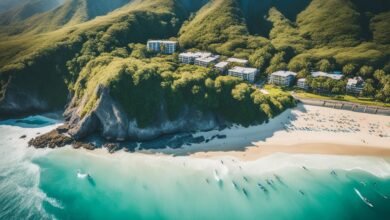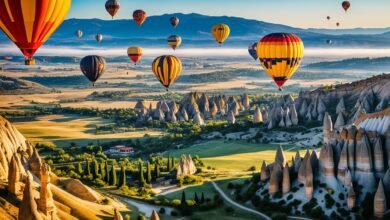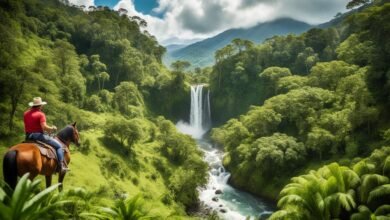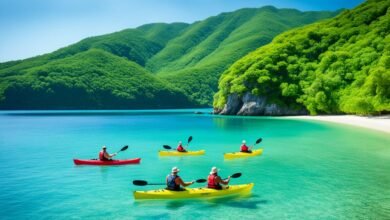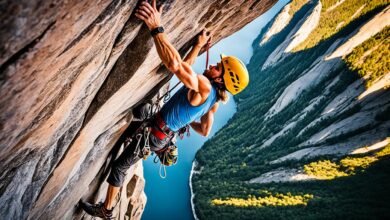Table of Contents
Safaris are all about journeying, a word that comes from Swahili. They used to be more about hunting and toughing it out in the wild. Now, though, they are mostly for observing and photographing animals. Today, Africa is a top spot for anyone who loves nature and wildlife. In this article, we’ll check out the top 10 African places for safaris. This list includes famous spots in East Africa, like Kenya and Tanzania. But we’ll also look at newer, eco-friendly places such as Malawi, Namibia, and Rwanda.
Introduction to African Safaris
The word “safari” comes from Swahili, which means “journey.” It has changed a lot over time. In the past, safaris were mainly for hunting and living in the wild. Today, safaris in Africa are more about watching and taking pictures of wildlife. Africa is still a top spot for people who love nature and want amazing adventures.
Origins of Safaris and Their Evolution
Long ago, safaris were for hunting big animals. Adventurers would travel far across wild Africa to find these animals. But times have changed. Now, safaris focus on seeing and photographing animals. Most visitors want to see the Big Five and many other creatures in their natural homes, not hunt them.
Africa’s Allure for Nature and Wildlife Enthusiasts
Africa is rich with parks, reserves, and protected lands. This makes it perfect for anyone who loves nature and animals. You can visit famous places like the Serengeti or Masai Mara. Or see Botswana’s Okavango Delta. Africa caters to everyone, whether you want a luxury lodge or a budget-friendly trip.
Botswana: A Wildlife Conservation Haven
Botswana is a top spot for wildlife lovers. It’s known for its African safari destinations and many national parks and game reserves. In 2014, Botswana stopped all commercial hunting. Now, it has very tough rules against poaching. The Botswana Defense Force guards against poaching with special teams.
Strict Anti-Poaching Measures
Botswana works hard to protect wildlife. It fights poaching strongly. The Botswana Defense Force helps keep the country safe for seeing the Big Five animal viewing and for wildlife photography hotspots. This makes Botswana one of the best ecotourism destinations in Africa.
Diverse National Parks and Game Reserves
Botswana has many national parks and game reserves. They offer a wide range of unique safari experiences. Places like Chobe National Park and the Okavango Delta are amazing for safaris.
There are opportunities to see lots of elephants and enjoy canoe safaris. These areas are perfect for luxury safari lodges, budget safari tours, and family-friendly safari camps.
Okavango Delta and Chobe National Park Highlights
The Okavango Delta is a UNESCO World Heritage Site. It’s perfect for wildlife photography hotspots and unique safari experiences. One can travel by mokoro, a traditional canoe, and see the Big Five animal viewing.
Chobe National Park has huge elephant herds. It also has many other wildlife species. It’s a top choice for African safari destinations.
Kenya: The Birthplace of Safaris
African safaris are amazing, especially in Kenya’s parks and conservancies. Even without the Great Migration, where animals move north, Kenya’s beauty is awe-inspiring. It has a huge variety of wildlife that you have to see to believe.
Masai Mara and the Great Migration Spectacle
The Masai Mara is famous as a key stop in the Great Migration. This huge reserve in Kenya is loved for its many wildebeests and zebras and the predators that hunt them. Seeing the Great Migration is a dream for nature lovers worldwide.
Amboseli National Park and Mount Kilimanjaro Views
Amboseli is another highlight, near Tanzania, showcasing its large elephant herds and stunning bird life. It’s also known for its views of Mount Kilimanjaro. Here, you can see the famous Big Five of Africa and capture amazing photos of Kenya’s beauty.
Malawi: An Emerging Ecotourism Destination
Locating Malawi on a map can be a challenge for many. But this little-known country is gaining fame as an ecotourism spot. The Lake Malawi National Park is the primary reason. It covers a big part of Malawi, making it rich in biodiversity. This park is home to around 200 types of mammals, 650 bird species, and over 5,500 plants.
Lake Malawi National Park’s Biodiversity
Lake Malawi is the ninth largest lake globally, full of amazing life. It has an incredible variety of freshwater fish, including over 1,000 cichlid species. This makes it a paradise for those who love fishing. Around the lake, you’ll find places perfect for wildlife photos. Here, you can see animals like elephants and leopards, along with many amazing bird species.
Other National Parks and Reserves
Moving beyond Lake Malawi, Malawi offers even more for nature lovers. It has four national parks and reserves and two biosphere reserves. These areas are starting to get noticed for their unique appeal. They give visitors a chance to see Africa’s Big Five and enjoy various safari landscapes, from hills and wetlands to mountains.
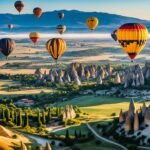 Where can I find the best places for hot air ballooning around the world?
Where can I find the best places for hot air ballooning around the world?
| Malawi National Parks and Reserves | Key Attractions |
|---|---|
| Lake Malawi National Park | Over 1,000 species of cichlid fish, diverse bird and mammal populations |
| Liwonde National Park | Healthy populations of elephants, hippos, and other big game |
| Nyika National Park | Stunning high-altitude landscapes, endemic plant and animal species |
| Majete Wildlife Reserve | Successful reintroduction of the Big Five, including black rhinos |
| Mwabvi Wildlife Reserve | Remote wilderness area known for sightings of lions and leopards |
Namibia: Self-Drive Safari Adventures
Namibia sits on Africa’s southwestern coast and stands out as a unique safari spot. It has over 300,000 square miles with only two million people. The area is very quiet. Namibia’s beauty captures you with ghost trees in Deadvlei and red dunes in Sossusvlei. Yet, it’s also filled with amazing wildlife.
Etosha National Park and Wildlife Sightings
Etosha National Park is famous for Africa’s Big 5 animals. Because it’s dry, many animals gather at its waterholes, making them easy to see. This includes wildlife like elephants, lions, leopards, and rhinos. For something truly special, visit the Cape Cross Seal Reserve. It has a huge colony of Cape fur seal.
Dramatic Desert Landscapes
Namibia surprises many as a top choice for African safari fans. Its deserts and wide national parks are perfect for unforgettable wildlife photography. You can plan your own journey through the vast wilderness by car. This way, you set your own pace and style.
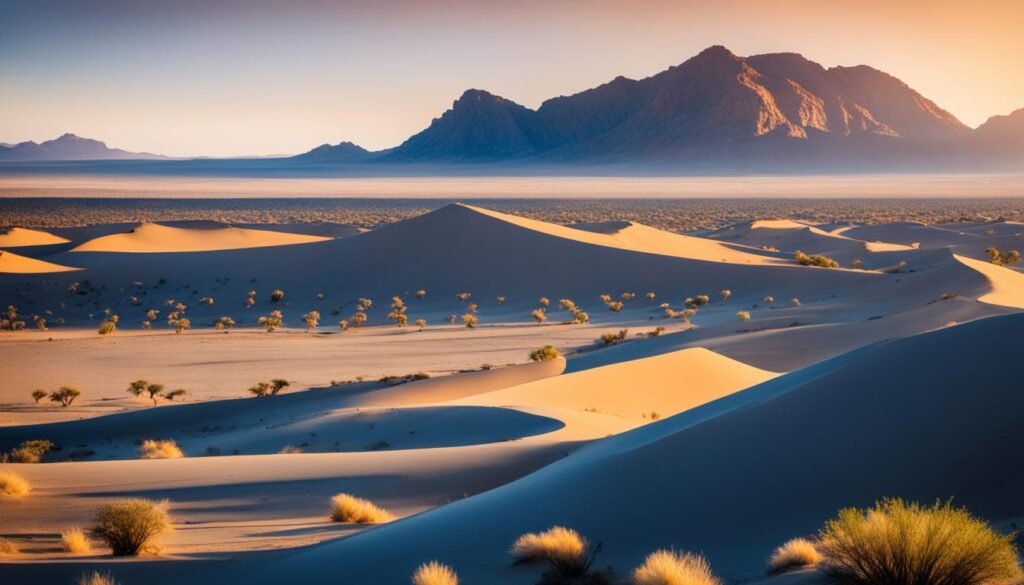
Rwanda: Home to Majestic Mountain Gorillas
Rwanda is known for the tragic events of 1994. However, it is also a place of great change over the last 25 years. It has become a leading African destination for eco-tourism. This allows visitors to see amazing wildlife and nature. Central to this is the story of the mountain gorillas.
Their survival story, as told by National Geographic and Dian Fossey, is breathtaking. These creatures are now the main attraction for many coming to Rwanda.
Gorilla Trekking in Volcanoes National Park
The Volcanoes National Park in Rwanda houses 10 gorilla families visitors can meet. Only eight people per group are allowed to visit each family daily. Spending an hour with these gorillas is a unique and memorable experience.
Visitors get to see gorillas up close and learn about their lives. The park’s scenery makes this wildlife encounter even more special.
Nyungwe Forest National Park’s Primates
Rwanda offers more than just mountain gorillas. In the south, Nyungwe Park is a gem for viewing primates. It’s perfect for seeing chimpanzees, colobus monkeys, and others. Besides, it’s a paradise for those who love wildlife photography.
Akagera National Park for Big Five Safaris
Akagera National Park is ideal for those wanting a classic safari. It’s in the east of Rwanda. The park is home to the Big Five and more, like giraffes and zebras. Its beautiful landscape offers a memorable setting for seeing these amazing animals.
South Africa: Kruger National Park and Beyond
Since apartheid ended in 1994, South Africa has become a top choice for safaris. The Kruger National Park is a big draw. It’s part of the UNESCO Biosphere Reserve and covers 7,500 square miles. Here, you can see the Big Five animals up close, making it a dream for wildlife fans.
Kruger’s Vast Biodiversity and Self-Drive Safaris
The Kruger National Park is massive and filled with diverse ecosystems. These draw a wide variety of wildlife. Besides the Big Five, you’ll see many other mammals, birds, and reptiles.
The park is famous for its self-drive safaris. It’s a great place if it’s your first time on a safari. Visitors can go at their own speed, exploring lush savannas and deep canyons.
Private Game Reserves for Luxury Experiences
If you’re looking for a more exclusive safari, consider the private game reserves near Kruger. These places offer luxurious accommodations and close-up wildlife experiences. Whether you prefer a fancy lodge or a cozy tent with great views, you’ll find top-notch service on these reserves.
Tanzania: The Great Migration’s Starting Point
Tanzania is a top pick for those wanting to see the wildebeest migration, neck and neck with Kenya. It’s the first stop on this epic journey.
Serengeti National Park and the Ngorongoro Crater
These places are truly amazing. The Ngorongoro Conservation Area stands out. It’s home to a huge, ancient crater filled with the Big Five.
The Serengeti is where the Great Migration kicks off. It’s very well known.
lesser-known gems such as Gombe Stream National Park, Tarangire National Park, and Lake Manyara National Park
sm3684_4000
 Monte Picchu in Peru: History, Mysteries, and Elevation
Monte Picchu in Peru: History, Mysteries, and Elevation
These places, on the flip side, might be less famous but they are just as breath-taking.
They offer their own unique charm.
Don’t miss
birdwatching opportunities
Tanzania is a bird lover’s paradise with over 1,100 kinds of birds. This includes rare and threatened species. Whether you’re here for the wildebeest migration or to see diverse habitats, there’s a lot to love about Tanzania.
[wildlife](https://en.wikipedia.org/wiki/African_wildlife) [safari](https://en.wikipedia.org/wiki/Safari)And even if you’re just into birds, Tanzania has something to offer. It welcomes all kinds of fans to experience nature and wildlife in a special way.
What are the top destinations for wildlife safaris in Africa?
Planning your first safari in Africa involves thinking about many factors. You’ll look at which countries make it easy for new travelers, offer rich wildlife, and have popular safari circuits. For first-timers, Botswana, Kenya, and South Africa are top picks. Each place has its own charm and excitement to offer.
Factors to Consider When Choosing a Safari Destination
Botswana shines with its water safaris and top-notch camps in beautiful settings. Meanwhile, Kenya stands out with the Great Migration and its Maasai culture. South Africa’s Kruger National Park is both convenient and budget-friendly, making it appealing to many visitors.
Popular Safari Circuits and Itineraries
When selecting where to stay, think about what you value. Africa provides various options, from upscale lodges to more economical self-catering choices. This way, every visitor can design their own ideal African safari adventure.
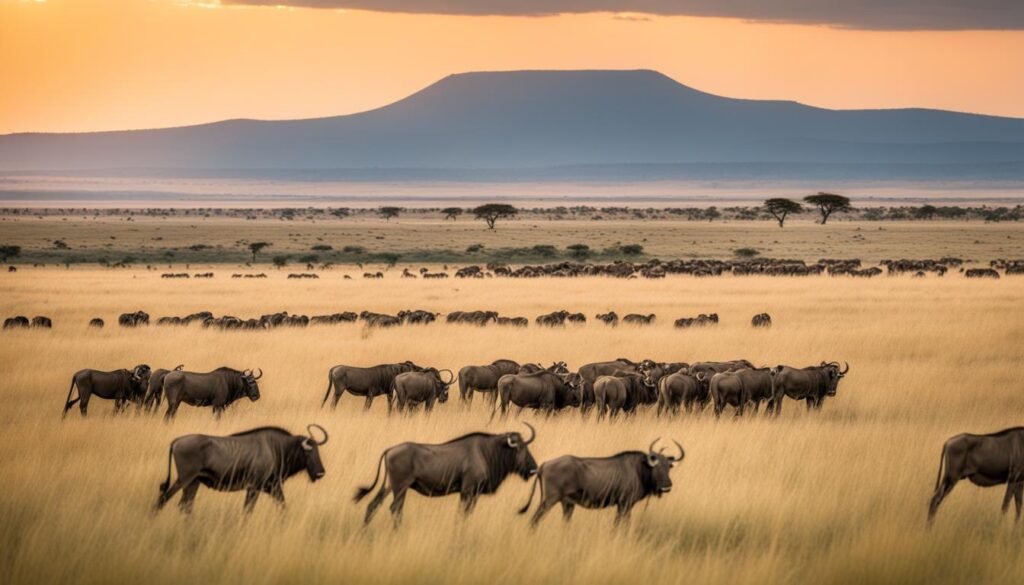
| Safari Destination | Highlights | Best Time to Visit |
|---|---|---|
| Botswana | Water-based safaris, exclusivity, high-quality camps | June to October (dry season) |
| Kenya | Great Migration, Maasai culture | July to October (peak of Great Migration) |
| South Africa | Kruger National Park, affordable options | Year-round, with peak season from May to September |
When to Visit for the Best Wildlife Viewing
When planning your African safari, the time you visit is crucial for great wildlife views. The period from June to October is seen as the best. This part of the year sees high water levels, perfect for seeing animals in places like the Okavango Delta. It’s also the top time to see the Great Migration in Kenya’s Masai Mara and the Serengeti in Tanzania.
Peak Safari Seasons by Region and Country
The best time for safaris might change depending on where you go. Namibia’s Etosha National Park, for example, is great for viewing wildlife even in the not-so-busy seasons. The movement of animals like wildebeests, zebras, and elephants affects the best times for certain African safari destinations.
Migratory Patterns and Seasonal Highlights
Knowing when and where animals move is vital for a successful safari. In East Africa, the Great Migration is at its peak from July to October. Millions of wildebeests and zebras travel across the Serengeti and Masai Mara. The dry season in Botswana’s Okavango Delta is also remarkable. It brings lots of elephants, hippos, and other water-loving animals to its lagoons and marshes.
| Region | Peak Safari Season | Seasonal Highlights |
|---|---|---|
| East Africa (Kenya, Tanzania) | June to October | Great Migration, Big Five animal viewing |
| Southern Africa (Botswana, Namibia, South Africa) | May to October | Okavango Delta, Etosha National Park, Kruger National Park |
| Central Africa (Rwanda, Uganda) | June to September | Gorilla trekking, chimpanzee viewing |
Choosing the right time for your safari means more chances to see Africa’s famous animals. It also gives you the opportunity to witness wonders like the Great Migration. Talking to a trusted safari guide can help you pick exactly when to visit for the experiences you dream of.
Accommodation Options for Safari Travelers
Planning a safari adventure in Africa opens up a world of accommodation options. The choices are as thrilling as the wildlife. You can pick from luxurious lodges to more affordable places, each fitting your needs and budget.
Luxury Lodges and Tented Camps
Want the best in comfort and privacy? Think about staying at a top-end private lodge or tented camp. They’re found in top wildlife spots like Botswana’s Okavango Delta and Kenya’s Masai Mara. These places are all about eco-friendliness, privacy, and service catered to you. You’ll be close to the wildlife, with special touches like your own pool, fine meals, and expert-guided activities.
Budget-Friendly and Self-Catering Options
If you’re aiming to save on your safari, there are affordable choices too. You can go for mobile safaris, lodges where you do your own cooking, or places outside the main park zones. Though more budget-friendly, you’ll still see wonderful animals. These options ask for some self-reliance and adaptability. Yet, they offer a genuine way to explore the African wild at a lower price.
 Boryeong Mud Festival: A Deep Dive into South Korea’s Mucky Celebration
Boryeong Mud Festival: A Deep Dive into South Korea’s Mucky Celebration
When you’re picking where to stay on your safari, remember to think about your budget, how comfy you want to be, and what experiences you’re after.
